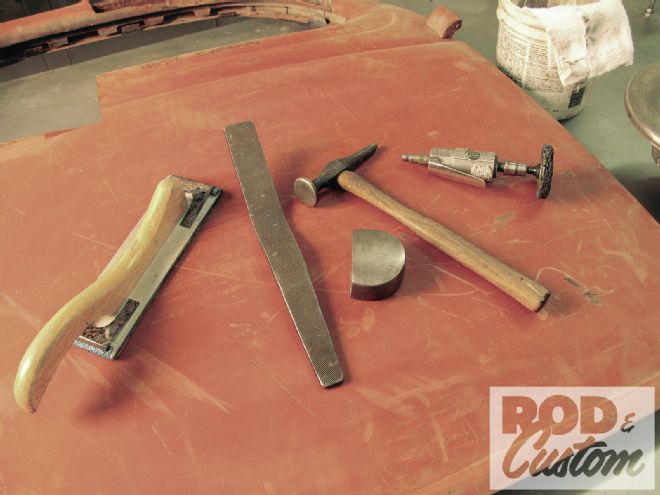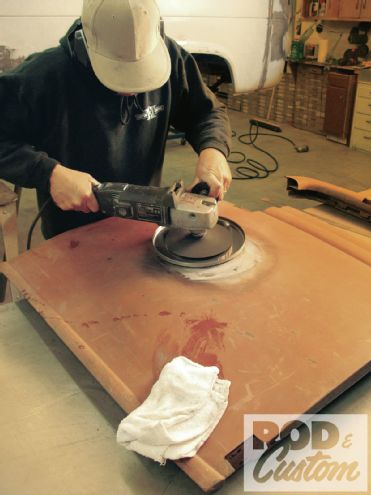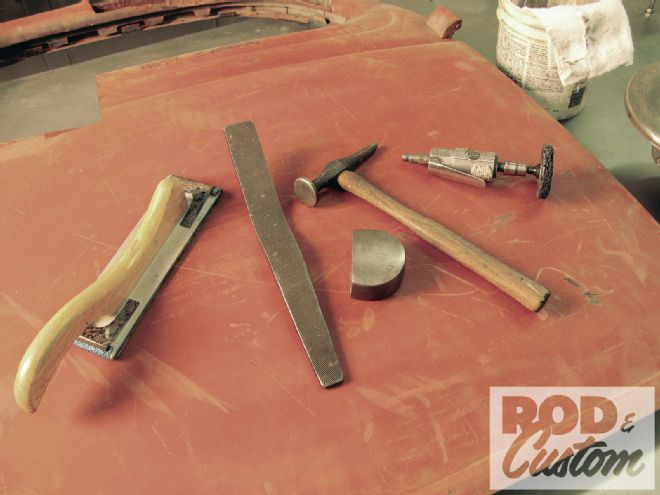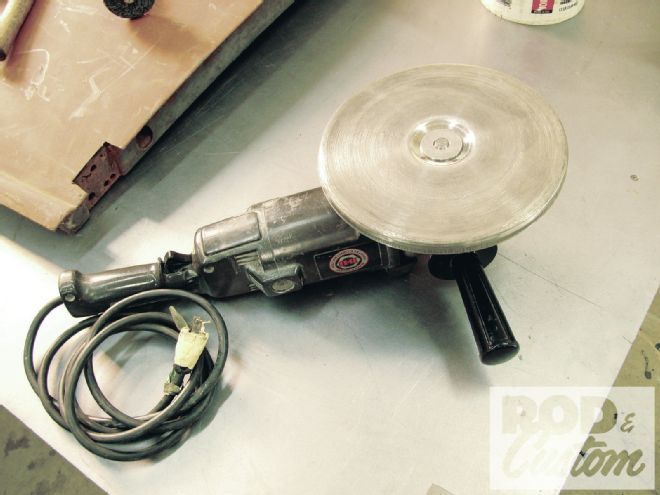
The term “gypsy dent puller” might not be something everyone’s familiar with, but we’ve all seen the results of their traveling trade. Typically, the method used by these roving bodywork specialists involves four basic procedures: drilling numerous holes (in and all around a dent), slide-hammering the riddled metal out, plastering Bondo over it, and applying a thick undercoating-type spray paint (ultimately to aid in disguising their shoddy work lying beneath). All four of these steps are unnecessary to begin with. Dents can be pulled—either paintless or bare sheetmetal—without drilling a single hole or via applying anything more than a very thin skimcoat of filler in the end. It is really that simple.

While the paintless dent removal process is in a class all by itself, working raw metal back to shape is something we all can perform. First, you need to have a good understanding of the particular distortion of the metal. Knowing how metal moves, you can confidently move it back to where it used to be prior to the damage that caused the dent in the first place. (Obviously, there comes a point when metal is distorted beyond repair, and in those cases, replacement is in order.)
 For basic metalworking, stick with the basics when it comes to tools: sanding blocks (long/short, solid/flexible), body files, hammers and dollies, and a good pneumatic grinder for starters. However, keep in mind that quality goes a long way, so saving a dime here and there may eventually cost you a quarter down the road!
For basic metalworking, stick with the basics when it comes to tools: sanding blocks (long/short, solid/flexible), body files, hammers and dollies, and a good pneumatic grinder for starters. However, keep in mind that quality goes a long way, so saving a dime here and there may eventually cost you a quarter down the road!
For every action there’s a reaction—and that’s the basic principle you’re working with when repairing a dent. The first action is the actual causing of the dent itself—that action not only resulted with a visible recess in the surface, but most likely stretched the metal as well. Additionally, when the metal is pushed in, it could also cause the outer perimeter of the surface around the impact to push out. In essence, the reaction is that the composition of the metal’s molecules has been disrupted; your job is to restore order in the piece and return the molecules to their original position. So, your first reaction is to pound that dent back out. Unfortunately, that’s where many people stop, relying on body filler to handle the rest. That initial reaction may have brought the dent back up, but if the metal was stretched in the first place, the surface needs to be shrunk in order to achieve the same plane that existed before the dent occurred—and without the use of excess body filler.
The shrinking aspect of dent removal is probably the most important, but obviously, it’s probably the least understood among non-professionals. Traditionally, heat from a torch, along with intermittent cooling from a wet rag and/or use of a hammer and dolly, was the common practice used for shrinking. Many metalworkers still prefer to use a torch, as they find that some of the new methods can remove metal in the process of shrinking. Another option is using a shrinking or friction disc—but just as with a torch, providing too much heat can create problems, so it’s vital that the user be very familiar with how the disc works. Modern shrinking discs are effective, easy to use, and fairly economical.
 A good 4 1/2-inch electric grinder is a must-have for any garage, but for the majority of metal shrinking, it’s better to use a larger 7- or 9-inch grinder and disc (the little ones are sufficient for smaller, confined areas).
A good 4 1/2-inch electric grinder is a must-have for any garage, but for the majority of metal shrinking, it’s better to use a larger 7- or 9-inch grinder and disc (the little ones are sufficient for smaller, confined areas).
But just as you would when using a torch, hammer and dolly work is still necessary to finitely finish the metal once it’s been shrunk. For occasional use, the inexpensive sets you find at places like Harbor Freight are OK—but if you plan on doing more than just a couple jobs a year, invest in better quality tools, such as what you’d find available from Eastwood. While the cheap ones may appear to be the same as the more expensive ones, the difference is in the metal—softer metal will succumb to repeated use a lot quicker than harder metal. Additionally, consider outfitting your tool arsenal with a slap file (also known as a body file), pneumatic tools, sanding pads, and abrasive discs.
Learning how and why metal does what it does, you can control the outcome of what it ultimately does for you. Whether you’re working with contoured, high-crown surfaces or flat panels, take the time to understand the metal before you start pounding on it! That knowledge is the best body-working tool you could ever obtain.